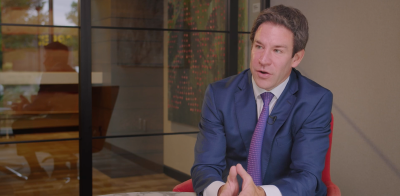Well, another two weeks of 2022 down, another two weeks of really tough outcomes for stocks and bonds. The 60/40 is toast and permabulls keep getting run over by steamrollers. Portfolios with a 60/40 allocation are flirting with lower lows and are down almost -17% on the year, with the Bloomberg Agg down almost -13% and the S&P 500 down almost -20%. Holy Cow (again)! The time for alts is now!
- I wish I could reward each and every individual investor, financial advisor and asset manager who paid attention, fought inertia, and embraced a select subset of alternatives either as a replacement for fixed income, equities, or both. As an alternative asset manager, there is no greater joy than having the right solutions at the right time to help investors navigate this very predictable bear market for both equities and bonds (aka a galactic mean reversion).
- The recent driver of another leg down in markets was that inflation did not decline further as every permabull and dip buyer hoped and prayed, but instead climbed higher (despite a fall in energy prices). Unfortunately, inflation has now become embedded in services and the labor market, which means the Fed might need more than a sledgehammer to break inflation, but a wrecking ball as well. The hangover from outrageous levels of money supply growth and asset inflation is back at the debilitating migraine stage.
- Here’s the good news on the future trajectory of inflation:
- Money supply has already declined prior to the Fed recently ramping up their balance sheet reduction program (QT) in September.
- It is hard to imagine money supply does not stagnate or potentially even decline further since the Fed is aggressively hiking interest rates and draining their balance sheet at a pace 4.5 times the last quantitative timing in terms of dollars, 3.6 times in terms of nominal GDP and 2.9 times in terms of existing money supply. Remember, when money supply grows slower than nominal GDP, it’s hard for markets to go up and really easy for them to go down.
- Inflation down over time? Unless velocity (the speed at which money changes hands in the real economy) picks back up to pre-pandemic levels rapidly (unlikely), inflation is destined to come down over time and a decade of 1970s-style high, single-digit inflation or higher should not occur.
- Here’s the bad news:
- The cost of slowing inflation back down to more economically reasonable and politically palatable levels is now incredibly high.
- Recession risk has gone up significantly (as a reminder, equity markets tend to struggle in recessions) and the housing market is already getting pummeled by a collapse in affordability driven by much higher prices compared to pre-pandemic and skyrocketing mortgage rates.
- Even if a soft landing is achieved and the economy can miraculously avoid a recession, additional Fed tightening (particularly balance sheet reduction) almost guarantees another leg down in markets and lower lows in terms of price.
- If the galactic mean reversion ends sooner than we think, we’re not going back to a “green light go” market like 2019 to 2021 anytime soon.
- We have written about how this recent bear market rally brought back the old adage “markets don’t go up in a straight line and they don’t go down in a straight line,” which, due to never ending Fed intervention since the global financial crisis (to the Fed’s credit, for good reasons), many market participants apparently had forgotten.
- We now feel compelled to remind everyone that another old adage is about to make a comeback to the downside: “Markets always overshoot fundamentals” and this is to the upside and to the downside. Markets very rarely adjust to fair value (whatever that means) and stop. We certainly saw markets overshoot to the upside in 2021 and now we are going to see it to the downside as well.
- If you’ll allow me now to direct your attention to an alternative opportunity (I’ve spoken of before) in the real estate market, specifically optimizing the capital structure:
- Under pressure: After a long post-GFC bull market and recent meteoric appreciation the last two-and-a-half years, the real estate market is starting to come under pressure.
- Housing: The residential housing market has already rolled over as affordability has collapsed back to the pre-GFC housing bubble lows of 2006, inventory/sales ratios have soared, and buyers have rationally dropped bid prices.
- Commercial real estate: Commercial real estate is starting to show incipient signs of price declines driven by similar factors:
- Higher borrowing costs
- Higher cap rates
- Lower transaction volumes
- Lack of excess supply: Fortunately, both residential and commercial real estate markets do not have vast overhangs of excess supply driven by excess building and construction.
- Rational underwriting: Also, fortunately, both markets continued to engage in rational, thoughtful underwriting including low loan-to-values.
- Ability to absorb: And again, fortunately, both markets have ample equity to absorb price declines without leading to losses to lenders in the event of sustained price declines.
- Galactic mean reversion sequel? However, it is more than likely that both markets will experience price declines over the next several years. You can think of it as a mini-Galactic Mean Reversion or Galactic Mean Reversion Part II.
- Going up the capital structure: One of the institutional tactics that has worked over the past five to six years has been to embrace alternatives as a replacement for bonds. Since November 2021, this also applied to equities. That being said, institutions have been utilizing a short RMBS vs. long Treasury position (short mortgage basis). The other opportunity is to take a look at real estate equity allocations and consider repositioning a portion of those assets further up the capital structure.
- Fight inertia: Embrace the urgency of improving investment outcomes.
Lastly, in times like these, let us all remember what I call the Hippocratic oath of investing: First, do no harm. Downside protection is still paramount and will be for quite some time. And second? Don’t be a hero. Buying dips in bear markets ends in tears (averaging down into oblivion). Instead, we urge you to embrace alternatives because the time for alts is now!




